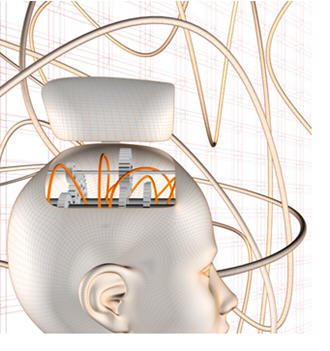
Your Brain Is Fine-Tuning Its Wiring throughout Your Life
Researchers evaluate white matter across the life span
Philadelphia, PA; February 3, 2014—The white matter microstructure, the communication framework of the brain, continues to develop/mature as one ages. Studies link age-related differences in white matter microstructure to specific cognitive abilities in childhood and adulthood.
Most prior studies, however, did not include individuals from the entire life span or evaluated a limited section of white matter tracts. This knowledge gap prompted a new study published this week in Biological Psychiatry.
Dr. Bart Peters, of the Zucker Hillside Hospital, and his colleagues investigated the relationship of age and neurocognitive performance to nine white matter tracts from childhood to late adulthood.
To accomplish this, they recruited 296 healthy volunteers who ranged from 8 to 68 years of age. The participants completed a comprehensive battery of tests designed to measure their cognitive functioning, including speed, attention, memory, and learning. They also underwent a non-invasive diffusion tensor imaging scan, a technology that allowed the researchers to create maps of the 9 major white matter tracts under investigation.
The combination of this data allowed them to identify the neurocognitive correlates of each white matter tract in relation to its unique aging pattern.
They found that, from childhood into early adulthood, differences in fractional anisotropy—a measure of connectivity—of the cingulum were associated with executive functioning, whereas fractional anisotropy of the inferior fronto-occipital fasciculus was associated with visual learning and global cognitive performance via speed of processing.
"Our study identified key brain circuits that develop during adolescence and young adulthood that are associated with the growth of learning, memory and planning abilities. These findings suggest that young people may not have full capacity of these functions until these connections have completed their normal trajectory of maturation beyond adolescence," explained Peters.
"Our brain is changing throughout our lives. These changes underlie the capacities that emerge and are refined through adulthood," commented Dr. John Krystal, Editor of Biological Psychiatry. "There are clues that the steps that we take to preserve our medical health and stimulate our minds also serve to further refine and maintain these connections. For good reasons, attending to brain health is increasingly a focus of healthy aging."
In addition, many individuals diagnosed with psychiatric disorders suffer with neurocognitive dysfunction as part of their illness, which is particularly difficult to alleviate with currently available treatments. Studies such as this may help to identify specific brain circuits/pathways that could serve as potential targets for treatment interventions.
ARTICLE:
"Age-Related Differences in White Matter Tract Microstructure Are Associated with Cognitive Performance from Childhood to Adulthood," Bart D. Peters, Toshikazu Ikuta, Pamela DeRosse, Majnu John, Katherine E. Burdick, Patricia Gruner, Daniel M. Prendergast, Philip R. Szeszko, and Anil K. Malhotra. Biological Psychiatry, Volume 75, Issue 3 (February 1, 2014), Elsevier. doi: 10.1016/j.biopsych.2013.05.020
